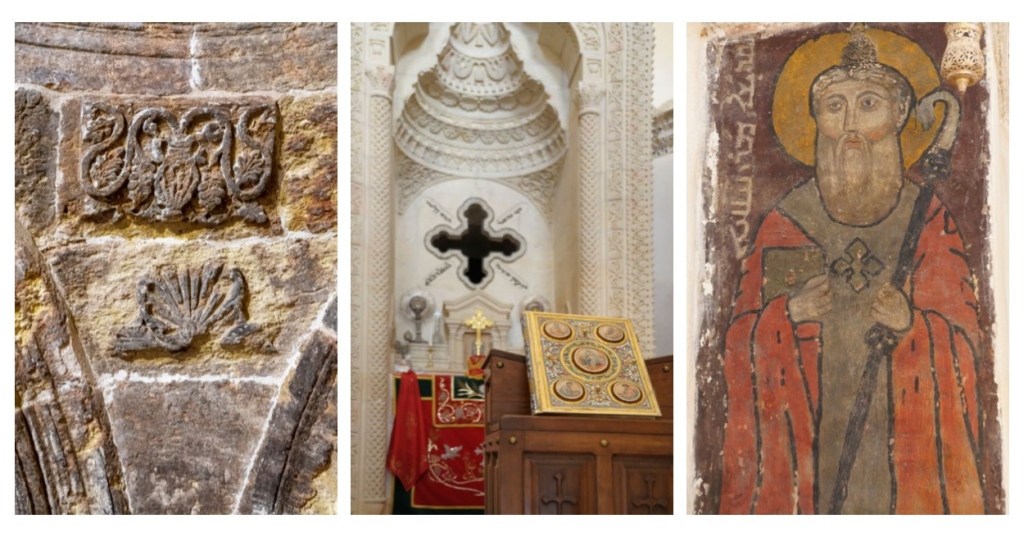Saffron Monastery made honorary member of ‘Iter Vitis’ Cultural Route of the Council of Europe
MERDE, Turkey — The Syriac Orthodox Saffron Monastery, Dayro d’Zahfaran in Syriac, one of the most ancient monastic sites in the world, has been made an honorary member of the Iter Vitis Cultural Route of the Council of Europe.
This recognition celebrates the monastery’s profound cultural, religious, and agricultural contributions over the centuries and marks the first such acknowledgment for a Syriac Orthodox monastery in northern Mesopotamia (Beth Nahrin).
The Iter Vitis is a Cultural Route of the Council of Europe dedicated to the promotion and preservation of Europe’s wine heritage. It’s a network of routes and experiences that explore the history, culture, and landscapes associated with winemaking, connecting different wine-producing regions across Europe. The route aims to showcase the link between nature and human work in shaping wine landscapes, and to share archaeological, historical, social, and cultural knowledge with visitors.
The nomination was made with the support of the Turkish Ministry of Culture and the Turkish Tourism Promotion and Development Agency, signaling a growing recognition of the region’s diverse cultural heritage. In its statement, Iter Vitis highlighted the monastery’s universal significance, referring to it as a symbol of “heritage, memory, and shared human narratives that transcend modern borders.” The organization also described monastic communities like the Saffron Monastery as guardians of intercultural dialogue, intangible heritage, and traditional agricultural practices, particularly viticulture.
Historical Significance of the Saffron Monastery
Located near Merde (Mardin), Turkey, in the historic region of Tur Abdin, the Saffron Monastery traces its origins to the 4th century when it was initially established as a chapel. By 505 AD, it had evolved into a full monastic complex and became a major religious and cultural center. For centuries, the monastery served as the Patriarchal See of the Syriac Orthodox Church, a role it fulfilled from the 13th century until 1932.
The monastery is an enduring symbol of the Syriac Christian community’s resilience and devotion. Its ancient walls have witnessed the passage of countless generations and have stood as a spiritual beacon for centuries, offering a glimpse into the region’s rich history and cultural continuity.
Land Steeped in Agricultural Tradition
The area surrounding the monastery, including the Tur Abdin and Tur Izlo regions, has long been celebrated for its agricultural practices, particularly wine cultivation, which dates back thousands of years. Historical texts, including the Book of Ezekiel, praise the exceptional quality of wine produced in the Tur Izlo region, which was highly sought after in ancient times.
The monastery itself has played a vital role in preserving these traditions. According to Iter Vitis, the Saffron Monastery’s high-altitude vineyards, located on limestone-rich soils, are home to unique native grape varieties. These grapes are carefully harvested to produce wine used in sacred ceremonies, such as Eucharistic celebrations, baptisms, and other liturgical events. The monastery also cultivates olive trees, producing oil used for blessings, burials, and other rituals. These practices not only sustain the monastery’s traditions but also preserve an essential link to the ancient cultural and spiritual heritage of the region.
Cultural and Global Recognition
The recognition by Iter Vitis underscores the monastery’s significance as a cultural, spiritual, and agricultural landmark. It also highlights the importance of monastic communities in fostering dialogue and preserving shared human values across generations. Iter Vitis’ statement emphasized that the inclusion of the Saffron Monastery on its list celebrates “universal values of heritage and memory” while promoting the importance of protecting such sites as bridges between the past and present.
This honorary listing marks a significant milestone in the ongoing efforts to celebrate and preserve the diverse cultural heritage of Beth Nahrin. The Saffron Monastery stands as a living testament to the enduring contributions of the Syriac Orthodox Church and the broader Christian community in shaping the region’s identity.
As the first Syriac Orthodox monastery to receive this distinction, the Saffron Monastery serves as a powerful symbol of resilience, continuity, and the enduring spirit of intercultural harmony. Its recognition by the Cultural Route of the Council of Europe reaffirms its status as an invaluable treasure of human civilization.

























